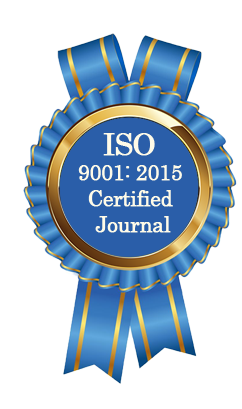| All | Since 2020 | |
| Citation | 105 | 60 |
| h-index | 4 | 4 |
| i10-index | 3 | 2 |
WJAHR Citation 
Login
News & Updation
Best Article Awards
World Journal of Advance Healthcare Research (WJAHR) is giving Best Article Award in every Issue for Best Article and Issue Certificate of Appreciation to the Authors to promote research activity of scholar.
Best Article of current issue
Download Article : Click here
Indexing
Abstract
STUDY OF RISK FACTORS FOR END-STAGE RENAL DISEASE AND THEIR RELATION TO SOME VARIABLES IN TWO HEMODIALYSIS CENTERS IN BAGHDAD CITY
*Dhuha Fakhri Jassim, Zainab Raad Naji Al-Baghdadi and Enas Talib Abdul-Karim
ABSTRACT
Background: End-Stage Renal Disease (ESRD) is a significant public health concern, characterized by the permanent loss of kidney function requiring dialysis or transplantation. Various risk factors contribute to the development of ESRD, including demographic, lifestyle, and medical conditions. Identifying these risk factors is crucial for prevention and management. Aim: This study aimed to assess the risk factors associated with ESRD among patients undergoing hemodialysis in two major centers in Baghdad and to evaluate their demographic and clinical characteristics. Method: A cross-sectional study was conducted on 240 ESRD patients undergoing dialysis at Baghdad Teaching Hospital and AL-Kadhymia Teaching Hospital from January 1 to April 31, 2012. Data collection involved structured questionnaires, direct interviews, and medical record reviews. Risk factors such as gender, smoking, obesity, diabetes mellitus, hypertension, renal diseases, family history, and NSAID use were analyzed. Results: The highest ESRD prevalence was observed in the 60–69-year age group (mean: 56.6 years). Males accounted for 63.7% of cases. Most patients were married, lived in rural areas, and had low educational levels. The duration of dialysis ranged from 1 to 12 years, with half receiving dialysis for less than three years. Smoking was prevalent (32.8% smoked ≥40 cigarettes/day), primarily among males. Obesity and overweight were found in 33.8% of patients. Additionally, 38.3% were hypertensive, 43.3% had diabetes, and 48.3% had recurrent UTIs. More than one-third had cardiovascular disease (34.2%) or kidney stones (35%). A significant proportion had a positive family history of ESRD (41.3%), and NSAID use was widespread. Conclusion: Older age, male sex, family history, smoking, obesity, and recurrent UTIs were key risk factors for ESRD. Preventive strategies should include early screening, public health education, and lifestyle modifications. Improving dialysis services is essential for better patient outcomes. Further research is needed to explore additional risk factors and preventive measures.
[Full Text Article] [Download Certificate]
